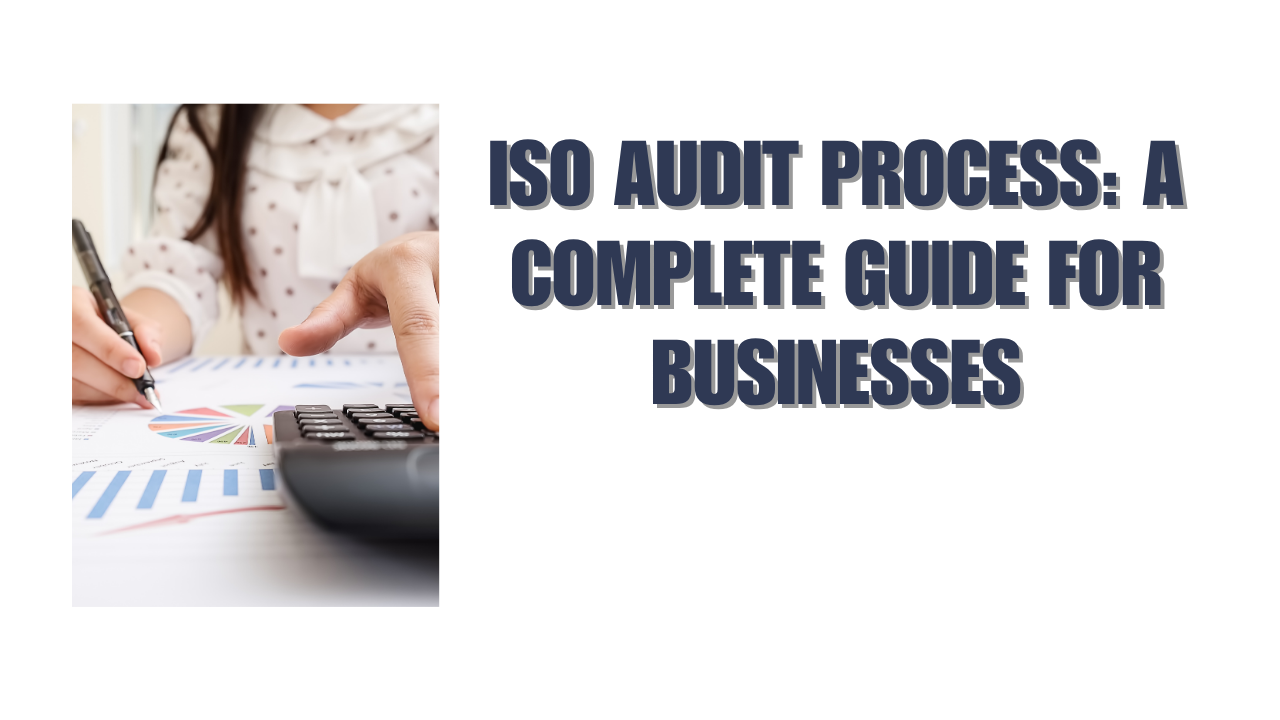Businesses that hold ISO certification know it is more than just a badge for marketing purposes. It signals that your organisation meets globally recognised standards for quality, safety, environmental management, or other key operational areas. However, gaining certification is only the first step. Maintaining it requires going through the ISO audit process on a regular basis.
An ISO audit checks whether your management systems still meet the requirements of the relevant ISO standard. The process can feel detailed and intense, especially for first-time participants, but it is also an opportunity to identify improvements and strengthen business performance.
In this article, we walk through what the ISO audit process involves, why it matters, and how you can prepare so your business approaches it with confidence.
Why ISO Audits Matter
ISO standards are built on the idea of continual improvement. Once your business is certified, you must show that you are not just meeting the standard once, but continuing to uphold and improve on it over time. The ISO audit process is the structured way to confirm this.
Audits ensure your systems are being followed in practice, not just on paper. They identify gaps, verify compliance, and highlight opportunities to operate more efficiently. Beyond compliance, they give customers, regulators, and partners confidence in your organisation’s commitment to quality and accountability.
Types of ISO Audits
Not all ISO audits are the same. Internal audits are carried out by your own trained staff or an external consultant to check your systems before a certification body visits. Certification audits are conducted by an accredited certification body to decide if you meet the ISO standard and can be awarded certification. Surveillance audits are regular checks that happen during the certification cycle to confirm ongoing compliance. Recertification audits take place at the end of a certification period, usually every three years, to renew your certification.
Each stage has its own focus, but they all follow the same underlying principles of review, evidence gathering, and reporting. Understanding the type of audit you are facing is important because it affects the scope and depth of preparation required.
Key Stages in the ISO Audit Process
The ISO audit process typically follows a series of steps, although the exact approach can vary depending on the standard, the auditor, and your organisation’s size and complexity.
The first stage is planning. This involves confirming the audit scope, scheduling dates, and identifying which processes and locations will be reviewed. You will be notified in advance of the areas under examination so you can prepare relevant documents and personnel.
The second stage is the opening meeting. The auditor explains the audit plan, confirms objectives, and ensures everyone understands the process. This meeting sets expectations and provides an opportunity to clarify questions before the detailed review begins.
The third stage is the on-site audit work. The auditor examines documents, interviews staff, and observes operations to verify that your management systems meet ISO requirements. They look for evidence that procedures are followed consistently and that records support compliance claims.
The fourth stage is the closing meeting. The auditor presents their findings, which may include positive observations, areas for improvement, and any non-conformities. Non-conformities are issues that must be addressed within a set timeframe to maintain or achieve certification.
Finally, the auditor issues a written report. This formal document outlines the evidence reviewed, the findings, and any required corrective actions. For certification audits, the report goes to the certification body to determine whether your organisation is granted or retains ISO certification.
Preparing for the Audit
Preparation for the ISO audit process should be ongoing rather than a last-minute scramble. Businesses that treat compliance as part of daily operations tend to find the audit much smoother.
Start with a thorough internal audit well before the official audit date. This allows you to identify and fix issues in advance. Make sure all documents are up to date, clearly labelled, and easily accessible. This includes policies, procedures, training records, performance monitoring data, and any records required by the specific ISO standard you hold.
Ensure your staff understand the processes and can explain them to the auditor. Training is important, but so is building confidence so employees can answer questions clearly and accurately. Assign a main point of contact for the auditor to ensure consistent communication.
If previous audits identified non-conformities, have evidence ready to show that you have implemented corrective actions. Being able to demonstrate improvement is a key part of maintaining certification.
Managing the Audit Day
On the day of the audit, keep the process organised and professional. Welcome the auditor and provide them with a quiet space to work. Make requested documents available promptly and accompany the auditor when they tour the facility or interview staff.
Answer questions honestly and directly. Avoid guessing if you do not know the answer; instead, offer to check the information and provide it later. Keep track of all requests and responses so you have a clear record of the process.
If the auditor identifies a non-conformity, treat it as an opportunity to improve rather than as a setback. Ask clarifying questions to fully understand the issue and begin thinking about corrective actions.
After the Audit
Once the ISO audit process is complete, review the findings carefully. If there are non-conformities, develop a corrective action plan with clear responsibilities and timelines. Submit evidence of corrective actions within the required timeframe.
Use the auditor’s recommendations as a guide for strengthening your systems. Even positive observations can highlight best practices worth applying in other parts of your organisation.
A successful audit is not just about passing the compliance check. It is about using the process to drive continual improvement, build stronger systems, and enhance your organisation’s credibility.
Conclusion
The ISO audit process can seem complex, but with the right preparation it becomes a powerful tool for improvement. By understanding each stage, keeping your records in order, and engaging your team, you can approach the audit with confidence and turn it into a valuable business exercise.
ISO certification is a sign of excellence, but it is the ongoing work behind it that truly sets your organisation apart. Each audit is an opportunity to strengthen your operations, build trust with stakeholders, and maintain a culture of quality that benefits your business in the long term.
FAQs
Q1. How often do ISO audits take place?
ISO certification typically runs on a three-year cycle. A full certification audit takes place at the start, followed by annual or semi-annual surveillance audits, and then a recertification audit at the end of the cycle.
Q2. What happens if we fail an ISO audit?
If an auditor finds major non-conformities, you will need to correct them within a specified timeframe. Failure to do so can result in suspension or loss of certification. However, most issues can be resolved with prompt corrective action.
Q3. Can internal staff perform the ISO audit?
Internal audits can be conducted by trained staff or external consultants to check compliance before the official audit. However, certification and surveillance audits must be performed by an accredited external certification body.






